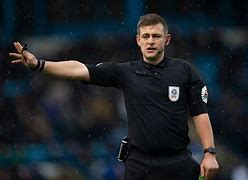Again, refs and ARs try to be aligned at throw-ins and ideally want signal together - the time it takes them to do that may be what you read as hesitancy. When you're next watching a game, especially when headsets aren't being used, keep an eye out for subtle signals between the ref and AR before they indicate which way they're awarding a throw-in. Refs tend to point left or right down by their sides to the AR which way they're expecting to give the throw-in. That is usually confirmed via eye contact or a nod of agreement and followed by the decision. If ARs are adamant they're correct and the referee is wrong e.g. having seen a deflection from a player on the blind side of the ref, they will agitate the flag the way they feel the throw-in should be given while it's still down by their side. Again eye contact or a nod of agreement is done before the decision is signalled. Those behaviours and examples are the reasons why it's pretty rare for officials to be misaligned on decisions and for the ref to have to overrule these days.
Most decisions might appear obvious, especially when you're sat in the stands or watching on tv but I can assure you that even getting throw-ins right when you're either reffing or being an AR isn't always easy. The things I tend to find most challenging as an AR are throw-ins where the ball crosses your touchline but a long way from you e.g. if the ball goes out near the far corner flag in the other half of the pitch (refs should take the lead for those calls and the AR support the decision by flagging the same way) and when the ball is near the touchline and played forward - the AR needs to check for the ball going out of play, any fouls being committed and offsides - it's not easy to look three different ways at once!


